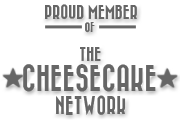Click here if you’re looking for custom cookies for your event, party or wedding?
All About Sugar
| Terminlogy How is Sugar made? Sugars |
As a child, I developed quite a sweet tooth. As I grew older, I discovered the dark side to sugar.
It has little nutritional value but adds calories to our diet and rots our teeth. So why do we love it so? You may be pleased to know it’s not our fault. It’s the fault of our primate heritage.
The human tongue can detect four basic flavours — salt, sour, bitter and sweet. Humans are naturally drawn to sweet because we are primates, animals that evolved eating fruit in the trees. Sugar is the ultimate comfort food.
Sugar production and trade has changed the course of human history in many ways. It influenced the formation of colonies, the perpetuation of slavery, the transition to indentured labour, the migration of peoples, and even wars between sugar trade controlling nations.
Sugar comes in many forms, and hopefully this post will help you understand some of the fundamental differences.
Terminology
Glucose – dextrose or grape sugar occurs naturally in fruits and plant juices and is the primary product of photosynthesis. Most ingested carbohydrates are converted into glucose during digestion and it is the form of sugar that is transported round the bodies of animals in the bloodstream.
Fructose – occurs naturally in fruits, some root vegetables, cane sugar and honey and is the sweetest of the sugars. It is one of the components of sucrose or table sugar.
Sucrose – found in the stems of sugar cane and roots of sugar beet. It also occurs naturally alongside fructose and glucose in other plants, particularly fruits and some roots such as carrots.
Maltose – formed during the germination of certain grains, most notably barley which is converted into malt, the source of the sugar’s name. A molecule of maltose is formed by the combination of two molecules of glucose. It is less sweet than glucose, fructose or sucrose.
Lactose – naturally occurring sugar found in milk. A molecule of lactose is formed by the combination of a molecule of galactose with a molecule of glucose.
Molasses – a viscous by-product of the refining of sugar cane or sugar beets into sugar.
How is sugar made?
Sugar is present in most plants, but is only in sufficient quantities for extraction in Sugar Beet and Sugar Cane.
Sugar Beet – Sugar beets are sliced and soaked in hot water to begin the process of separating sugar from the rest of the plant. The hot sugary liquid is filtered and concentrated to a deep brown syrup, whose colour is due to its high molasses content. The molasses–rich syrup is allowed to cool slightly before it is whirled in a centrifuge where most of the molasses is spun away. At the end, hot water is sprayed over the light brown crystals to remove the remaining molasses, leaving pure naturally white sugar crystals. The sugar crystals are then dried and naturally form white in colour.
Sugar Cane – Cane stalks are shredded and squeezed to extract the natural juice which is boiled until it thickens and molasses-rich sugar crystals begin to settle. The crystals are sent to a rapidly spinning centrifuge to remove the molasses and leave pure naturally white sugar crystals. The sugar crystals are then dried and naturally form white in colour.
White Sugars
Granulated sugar – It is a refined sugar, and the most common form of sugar. It is the sugar found in every home’s sugar bowl.
Caster sugar – Known as superfine in the US, it is a finer grain than granulated so dissolves more easily, and therefore more commonly used for baking.
Icing/powdered sugar – Also called confectioners sugar, it is ground to a fine powder and commonly used for icing or frosting.
Course sugar – A larger grain sugar, sometimes called decorating or sanding sugar. Its larger grains make it more resisting to dissolving during baking, so retains its crystalline characteristics.
Brown Sugars
Demerara sugar – A light brown sugar with large golden crystals, which are slightly sticky from the adhering molasses. It is often used in tea, coffee, or on top of hot cereals.
Brown Sugar (light or dark) – Brown sugar retains some of the surface molasses syrup, which imparts a characteristic pleasurable flavour. Lighter types are generally used in baking and making butterscotch. The rich, full flavour of dark brown sugar makes it good for gingerbread, mincemeat, and other full flavoured foods.
Muscovado – A very dark brown and has a particularly strong molasses flavour. The crystals are slightly coarser and stickier in texture than regular brown sugar.
Liquid Sugars
Corn Syrup – Made from the starch of maize and contains varying amounts of maltose, depending on the grade. Corn syrup is used in foods to soften texture, add volume, prevent crystallization of sugar, and enhance flavour.
Treacle – An uncrystallized syrup made during the refining of sugar.Treacle is used both in cooking as a sweetener and as a condiment.
Honey – A sweet food made by bees using nectar from flowers. The variety produced by honey bees is the type of honey collected by bee-keepers and consumed by humans. Honey produced by other bees and insects has distinctly different properties.
Agave Syrup – A sweetener commercially produced from several species of agave from Mexico or South Africa. Agave nectar is sweeter than honey and tends to be thinner.
Maple Syrup – A syrup usually made from the sap of sugar maple, red maple, or black maple trees. The trees store starch in their trunks and roots before the winter; the starch is then converted to sugar that rises in the sap in the spring. The sap is processed by heating to evaporate much of the water, leaving the concentrated syrup.

Leave me a comment...